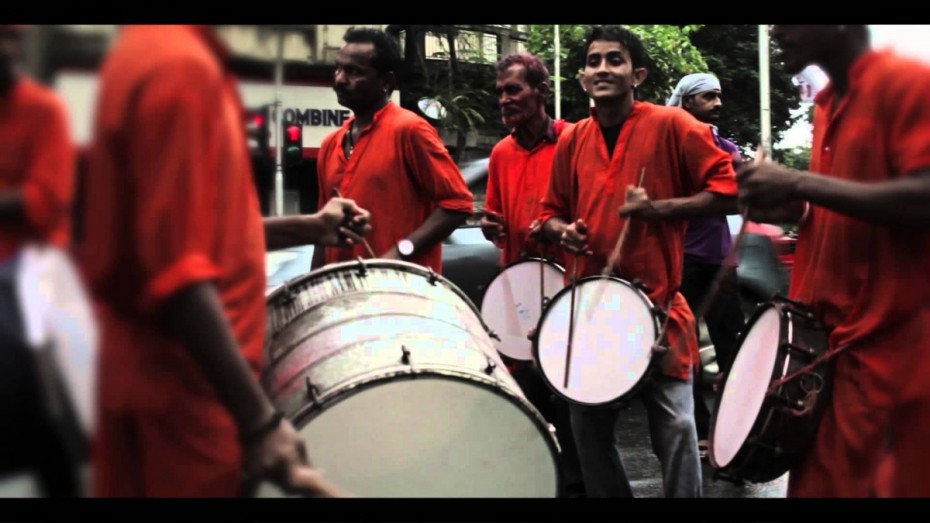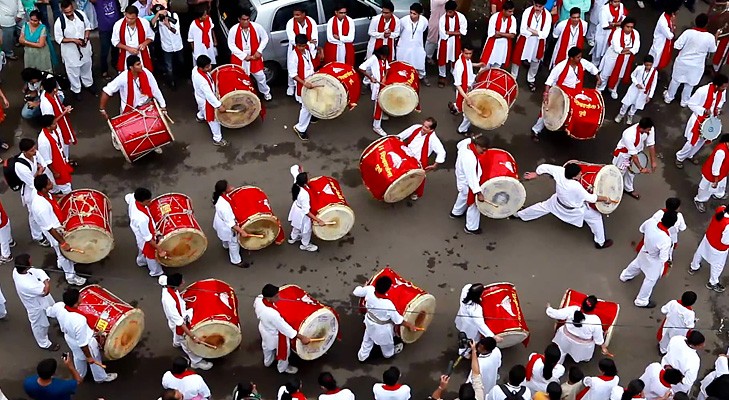The festival of Ganpati draws closer and the sounds of the dhol taasha get louder. And we had the opportunity to see the Ramanbaug Pathak, a type of Drum Group rehearse their various rhythms right before the festival started.
From the moment we stepped into Ramanbaug School, the beats hit the right notes in our hearts; and within minutes our heads were nodding in sync with the resounding booms of the dhol, and our fingers tapping to the rapid rolls of the taasha. Our Djembe classes had helped us develop a keen sense of rhythm and we could connect to the Pathak and understand the various rhythms and speeds at which the dhol taasha was played.
The age old tradition of the Dhol taasha has been preserved by the four pillar schools of: Dyan Prabhodini, Ramabaug, Garware and NMV; out of which Dyan Prabhodini is the father institution which kept this tradition alive. These schools decided to kick start this tradition in the city of Pune to maintain the true essence of the Ganpati Festival, to inculcate values of discipline, integrity, teamwork, etc. among the Pathak members.
The school of Ramanbaug started with a low of five dhols and one taasha, and now has over one hundred and fifty dhols and fifty taashas as part of their troupe. The players have swelled in number as well and are an integral part of this group. The Pathak is a social support system for the members, students, newcomers, teachers, seniors. The players in the Pathak are a mix of newcomers and previous seniors, (the balance between the two is maintained) where the newcomers are taught how to handle their respective instruments, bind them, tune them, and finally create soulful music by their seniors. The Pathak consists of people from all ages and steps of life who share a bond so strong that if one needs help, no less than ten of them would always respond.
The entire process of learning, playing and taking part in the dhol taasha Pathak is an entirely different level of dedication, determination and most importantly teamwork. From the preparation, to the learning of rhythms, to maintenance of instruments, to rehearsing, and to ultimately playing in the procession of the festive day, the Pathak has to maintain its discipline, energy level, integrity and perseverance.
The dhol and taasha are played in sync and there is a gradual progression from the start to the end, where the rhythms have varying beats, speeds and are played with great vigor and enthusiasm from the very moment the first call is made.
The Pathak is led by the Flag of Honor or the dhwaj, and the flagbearer has to be in sync with the rhythms as well. The Flag’s base is placed in the palm of the hands and the flagbearer has to keep his speed of dancing in complete sync with the speed of the varying rhythms, hence the flag acts as a means for the Pathak players to keep on the right track and speed.

On the final before leaving for the proceedings, the whole Pathak gathers and does a customary puja of the instruments. Once the Pathak takes to the streets of Pune, it makes the silent crowd turn into the jovial dancing one, and spreads it energy and enthusiasm till it multiplies again and again and touches the innermost corners of the mob. The dhol taasha tradition makes the whole episode of Ganpati festival very energetic and memorable.
We, Djembefolas in the making, learned the importance of working in a team in a disciplined and dedicated manner by witnessing the soulful tradition of dhol taasha which was not less than any other amazing Djembe Classes that we’ve attended. Dhol taasha tradition in Pune has now become the backbone of the Ganpati festival.
Author – Dhruv Vishvasrao

Varun is the founder and director of Taal Inc.
The visionary behind the motto
Come. Drum. Be One.
To read more about him Click Here

